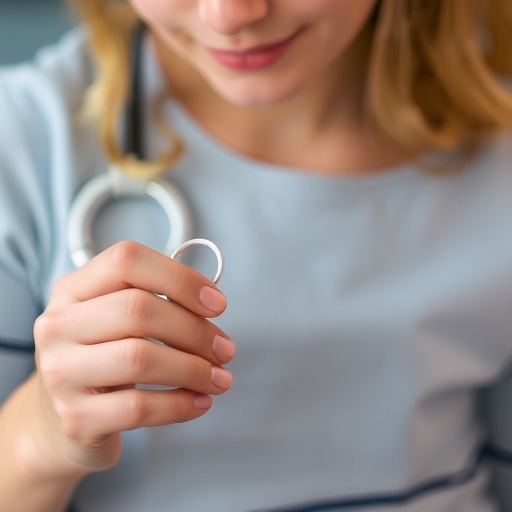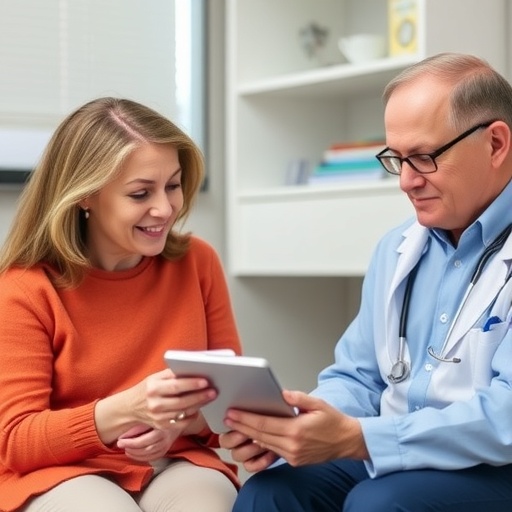Researchers receive federal grant to determine whether new government recommendations can prevent antibiotic-resistant infections in nursing homes

Credit: UMSOM
The Centers for Disease Control and Prevention estimates that more than two million people are infected with antibiotic-resistant organisms, resulting in approximately 23,000 deaths annually.
Many of these infections spread in nursing homes and long-term rehabilitation facilities, and the CDC issued new guidance in July on the use of personal protective equipment (masks, gowns) by healthcare providers to protect patients in these facilities from acquiring and spreading antibiotic-resistant germs to others. The guidance recommends that workers be required to don a gown and gloves during high-contact activities like wound care, bathing, assisting with toileting, adjusting invasive devices like urinary catheters, or changing dirty bed linens.
To test the effectiveness of these new recommendations, Mary-Claire Roghmann, MD, MS, Professor of Epidemiology and Public Health at the University of Maryland School of Medicine (UMSOM) and her colleagues received a $1.1 million award from the CDC to conduct a trial that starts in October and involves four community-based nursing homes in Maryland.
Lyndsay O’Hara, PhD, Assistant Professor of Epidemiology & Public Health, Laurence Magder, PhD, MPH, a Professor of Epidemiology & Public Health, and J. Kristie Johnson, PhD, Professor of Pathology, are co-recipients of the grant and will be participating in the research.
Two nursing homes will be randomly selected to follow the new CDC guidance, and the other two will be randomly assigned to follow their usual care for a period of three months. The facilities will then swap practices for three months with the first two going back to their usual practices and the second two following the new CDC guidance.
The researchers will see whether there is any difference in infection transmission rates among the facilities that follow the new guidance and those following their old practices. Up until now, the standard practice in most facilities has been to require staff to use gowns and gloves only when they anticipate coming into contact with a resident’s blood, body fluids, or open wounds.
“Nursing homes are very different environments from acute care hospitals. In hospitals, all health care workers routinely wear a gown and gloves during all interactions with patients who are known to be infected with antibiotic-resistant bacteria. But this is impractical and socially isolating for nursing home residents who are living in a home-like environment,” said Roghmann. “We’re trying to practice precision public health, which means targeting the right prevention measure to the right resident at the right time.”
The new CDC recommendations were based in part on previous research conducted by Dr. Roghmann that was funded by the Agency for Healthcare Research and Quality and the National Institute for Health. She and her colleague Lona Mody, MD, at the University of Michigan found that a targeted increase in the use of gowns and gloves in nursing homes could help prevent and control the spread of dangerous bacteria.
They first identified specific care activities, such as showering the resident, toilet assistance, and wound dressing changes, that were most likely to result in the transmission of antibiotic-resistant bacteria. “Some of these findings were quite surprising and led the CDC to consider new approaches,” said Dr. Roghmann.
The new study, set to begin in October, will last several months and will yield results by the end of next year. UMSOM researchers hope to determine if this targeted approach will be an effective tool in reducing the spread of bacteria without reducing the unique style of care at nursing homes.
“This new research is part of a critical mission of the School of Medicine, which is to develop strategies to keep patients safe and reduce their exposure to dangerous infections. I am proud of the work we have done in this area that has formed the basis for new federal government recommendations,” said UMSOM Dean E. Albert Reece, MD, PhD, MBA, Vice President for Medical Affairs at the University of Maryland and the John Z. and Akiko K. Bowers Distinguished Professor.
###
About the University of Maryland School of Medicine
Now in its third century, the University of Maryland School of Medicine was chartered in 1807 as the first public medical school in the United States. It continues today as one of the fastest growing, top-tier biomedical research enterprises in the world, with 43 academic departments, centers, institutes, and programs. The School of Medicine has a faculty of more than 3,000 physicians, scientists, and allied health professionals, including members of the National Academy of Medicine and the National Academy of Sciences, and a distinguished recipient of the Albert E. Lasker Award in Medical Research. With an operating budget of more than $1.2 billion, the School of Medicine works closely in partnership with the University of Maryland Medical Center and Medical System to provide research-intensive, academic and clinically based care for more than 1.2 million patients each year. The School has over 2,500 students, residents, and fellows, and more than $540 million in extramural funding, with most of its academic departments highly ranked among all medical schools in the nation in research funding. As one of the seven professional schools that make up the University of Maryland, Baltimore campus, the School of Medicine has a total workforce of nearly 7,000 individuals. The combined School and Medical System (“University of Maryland Medicine”) has an annual budget of over $6 billion and an economic impact of more than $15 billion on the state and local community. The School of Medicine faculty, which ranks as the 8th highest among public medical schools in research productivity, is an innovator in translational medicine, with 600 active patents and 24 start-up companies. The School works locally, nationally, and globally, with research and treatment facilities in 36 countries around the world.
Media Contact
Deborah Kotz
[email protected]




